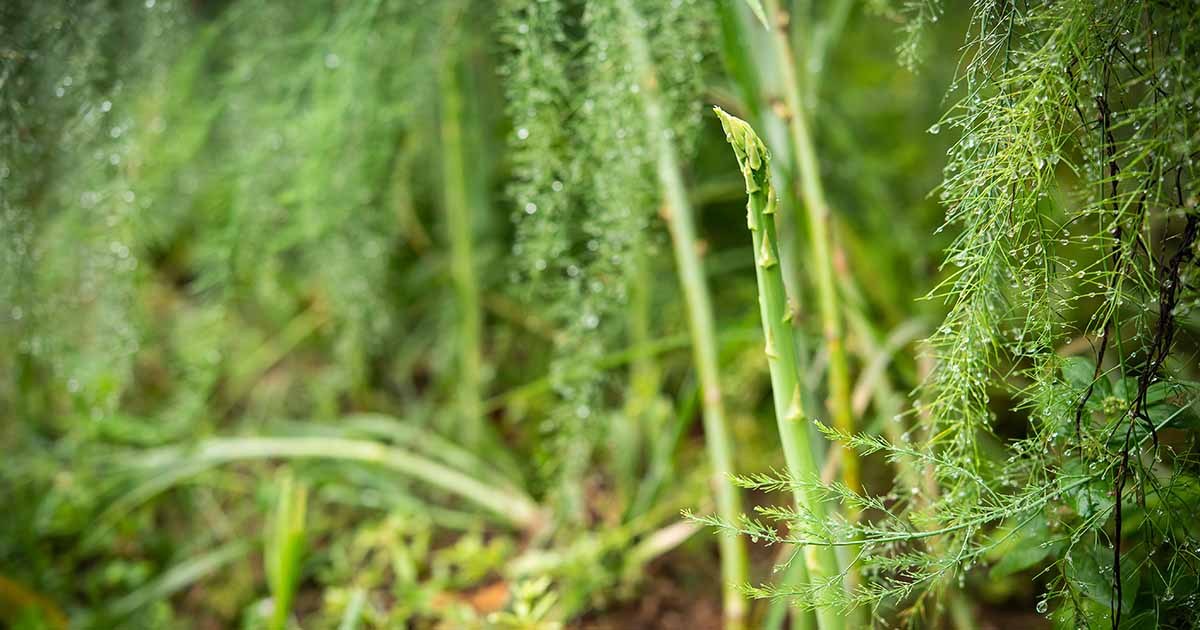
Growing asparagus in the home garden takes patience.
Depending upon which option you choose at planting time – seeds, crowns, or starts – it can take several growing seasons before the bed you’ve lovingly prepared will play host to those tender, delicious springtime spears.
In the fall, when the garden beds begin to doze under piles of leaves in preparation for first frost, your asparagus may more closely resemble fern-like Christmas trees, sprouting foliage up to seven feet tall.
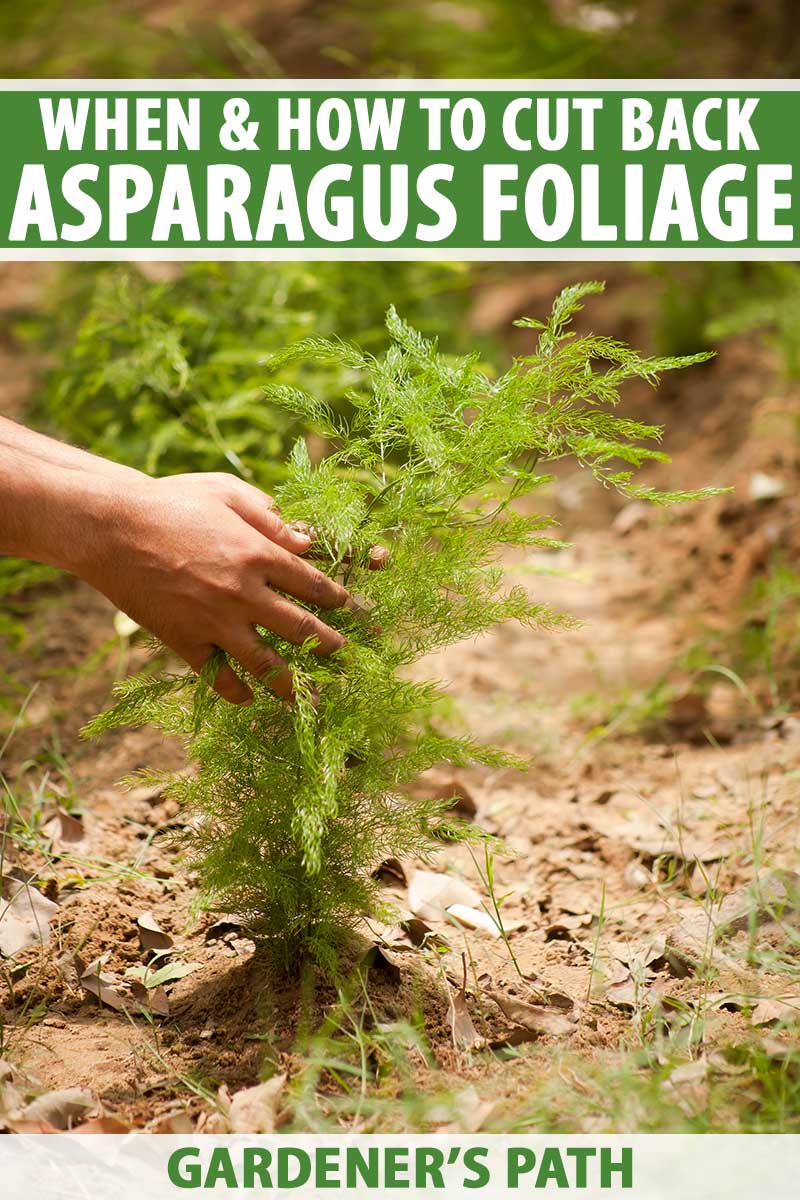
We link to vendors to help you find relevant products. If you buy from one of our links, we may earn a commission.
Even though asparagus is dioecious – with plants that are either male or female gendered – both the males and females produce foliage and flowers. But only female plants produce seed.
To keep your plants healthy and to prepare them for their next growing season, it’s recommended to cut back foliage in the fall after the second or third year following planting.
But what does cutting back do for your plants? Let’s take a closer look.
Asparagus Anatomy
Asparagus is a perennial flowering plant that can produce crops for more than twenty years.
Underground, it grows from clusters of roots commonly known as crowns. The crowns are typically left to overwinter in the ground.

The young, new shoots that sprout in early spring are the part of the plant that we eat, but after the harvest period has ended, the plants produce foliage.
Harvesting the stalks triggers the production of new growth to replace the harvested shoots, which uses a lot of energy.
From summer through fall, before winter weather strikes, the springtime sprouts that weren’t harvested will continue to grow into a tall, bushy, fern-like plant.

The green vegetation is dense and can grow up to seven feet tall.
While some consider bolting to be a negative thing, it’s actually a natural part of the growth cycle that allows the plant to photosynthesize and propagate.
The plants will produce tiny blooms that await pollinators to spread pollen from male to female, and by late fall, female plants will produce small, round, red seed pods that hang from the branches like Christmas ornaments.
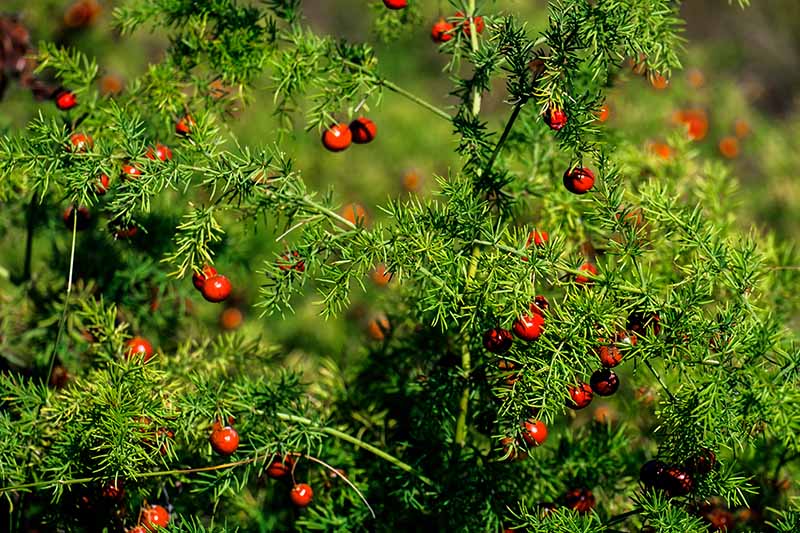
Check our guide to learn more about the differences between male and female plants.
While gardeners who want to collect seed may let the pods ripen, it’s typically recommended not to allow seeds to grow, because the process consumes a lot of energy.
As a part of the life cycle of the plant, foliage begins to die back, turning yellow or brown as crowns go dormant. At this time, you’ll want to cut them back for winter.
Cutting dead foliage back serves a few purposes:
First, allowing plants to complete their seasonal life cycle will produce healthier roots. The foliage will continue to photosynthesize and store energy in the root system throughout the growing season.
Second, roots that form to support the growth of the new foliage are stronger and deeper. Healthy roots produce healthier plants, and a more bountiful crop in the next growing season.
Additionally, nuisance pests called asparagus beetles are known to inhabit the ferns, where they lay eggs in the fall.
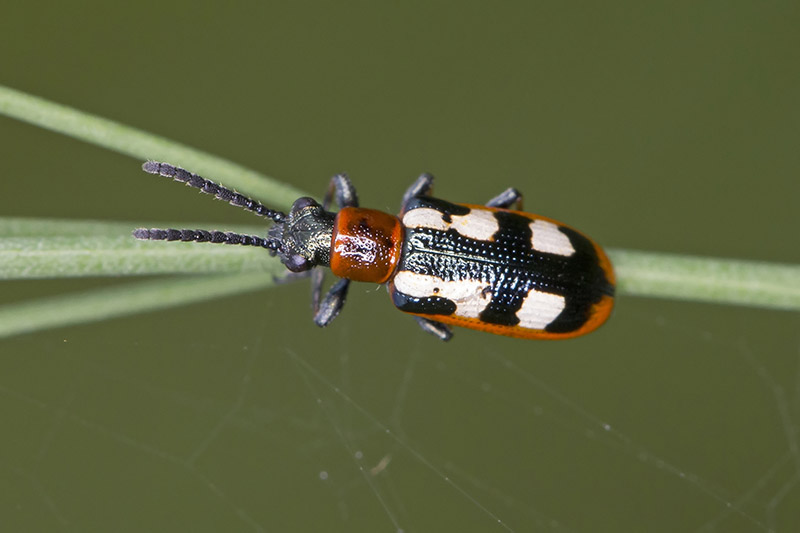
Cutting back can nip an infestation in the bud ahead of the next growing season.
Cutting Back Foliage
Autumn foliage that has turned yellow or brown is ready to be cut back.
It’s important to refrain from pruning prior to die-off, as the plant will continue to photosynthesize while it is still green.
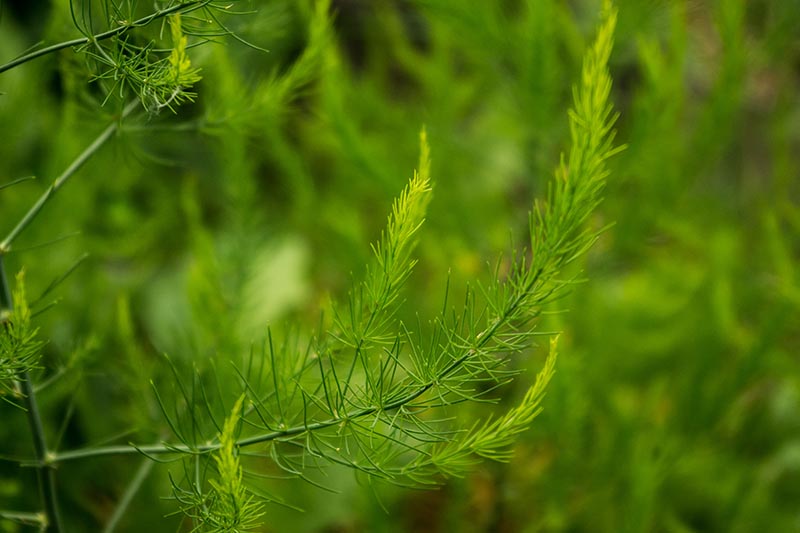
When plants have gone dormant, use pruning shears to cut ferns back to ground level.
If the cuttings are healthy and not diseased or infested, they can be composted or used to mulch the growing bed for the winter.
Always use caution when composting pruned ferns, however, as pests may lay eggs there that can be spread to your compost pile, leading to potential reinfestation when they hatch.
When foliage has been cut back, adding a thick layer of compost or mulch will help to protect crowns through the winter, especially in areas where snow cover can become deep, or temperatures dip well below freezing.
You can learn about mulching to protect cold-tolerant crops in this guide.
Quick Tips for Fall Cutbacks
Keep the following in mind when you cut back your plants in autumn:
- Growth of asparagus foliage is an important part of the plant’s life cycle.
- Unless you plan to save the seeds, it’s best to remove them to conserve energy.
- Wait until foliage turns yellow or brown and the plant becomes dormant before pruning.
- Cut foliage back to ground level.
- Mulch asparagus beds to protect them during the winter months.
A Little Maintenance Goes a Long Way
It takes a lot of energy for plants to grow, and removing dead leaf matter will help to boost production in the next growing season.
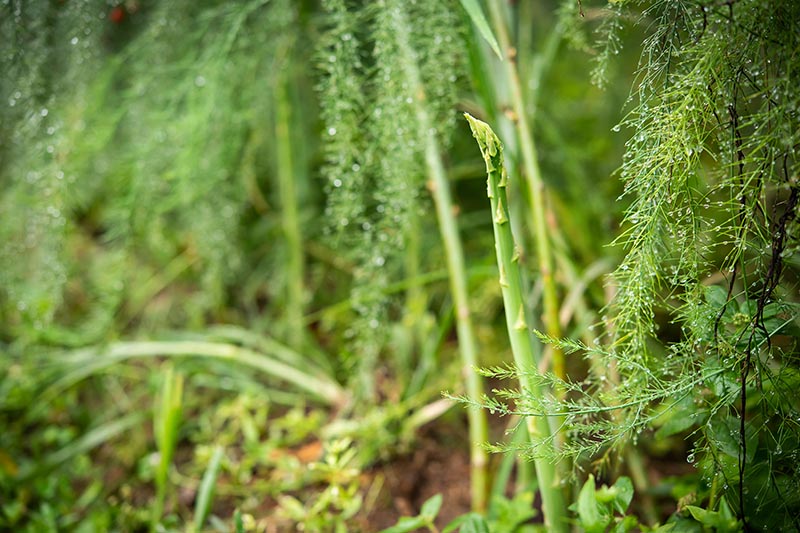
Preparing perennial plants for winter will save a lot of disappointment, as those that are maintained well will return, vigorous and ready for a new year.
Have you had some experience growing asparagus in your garden? Did you notice a better yield after cutting back foliage?
And for more information about growing asparagus, check out these guides next:





